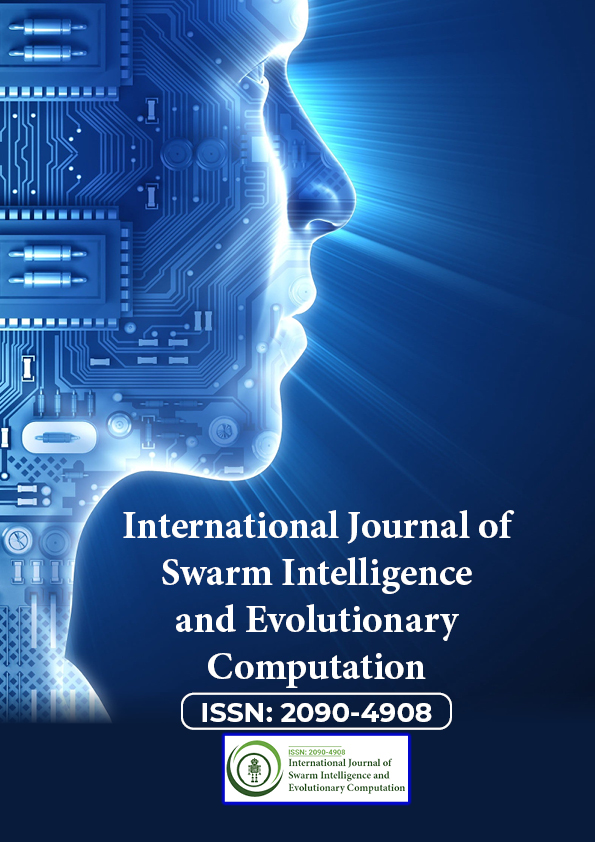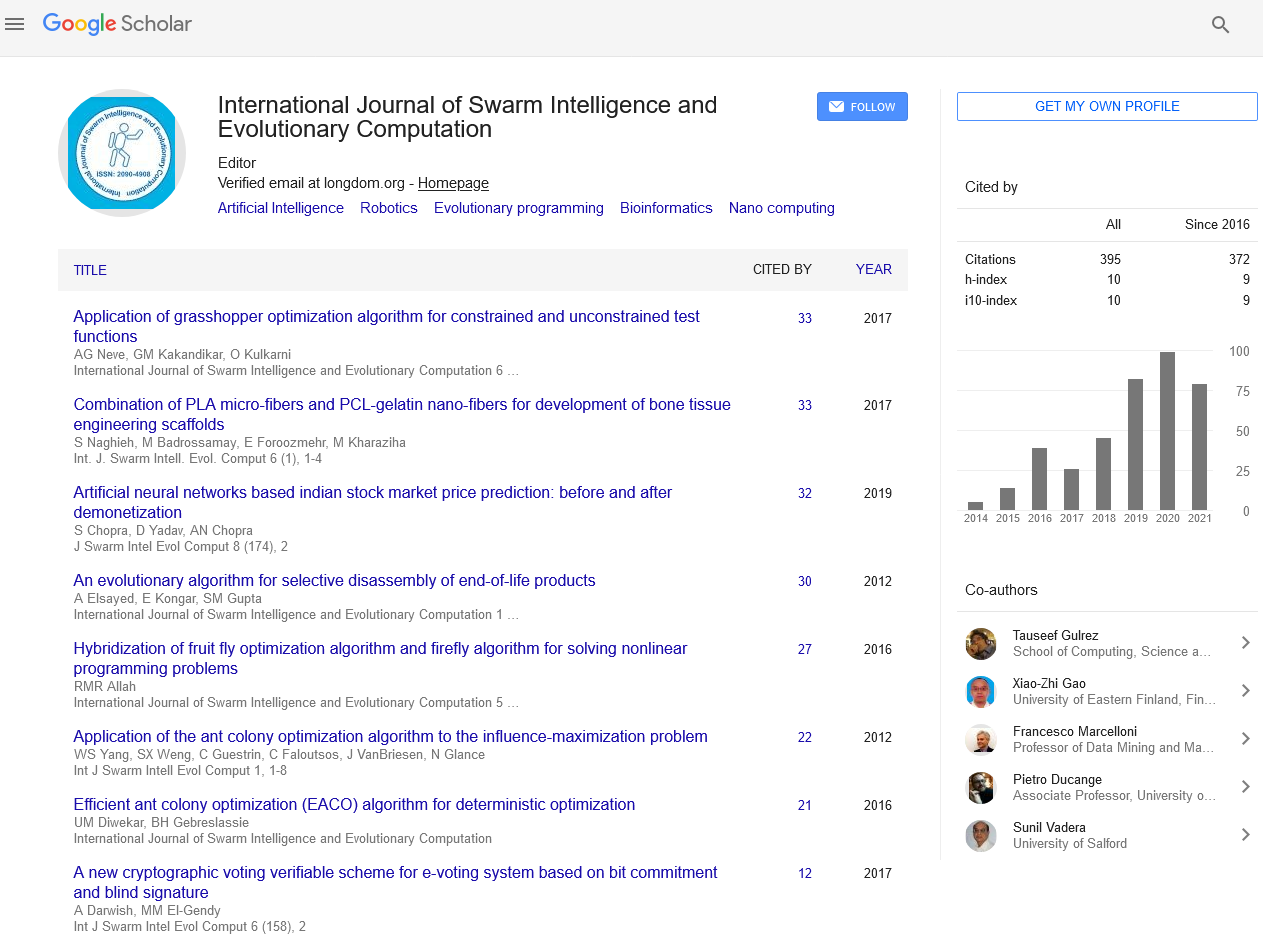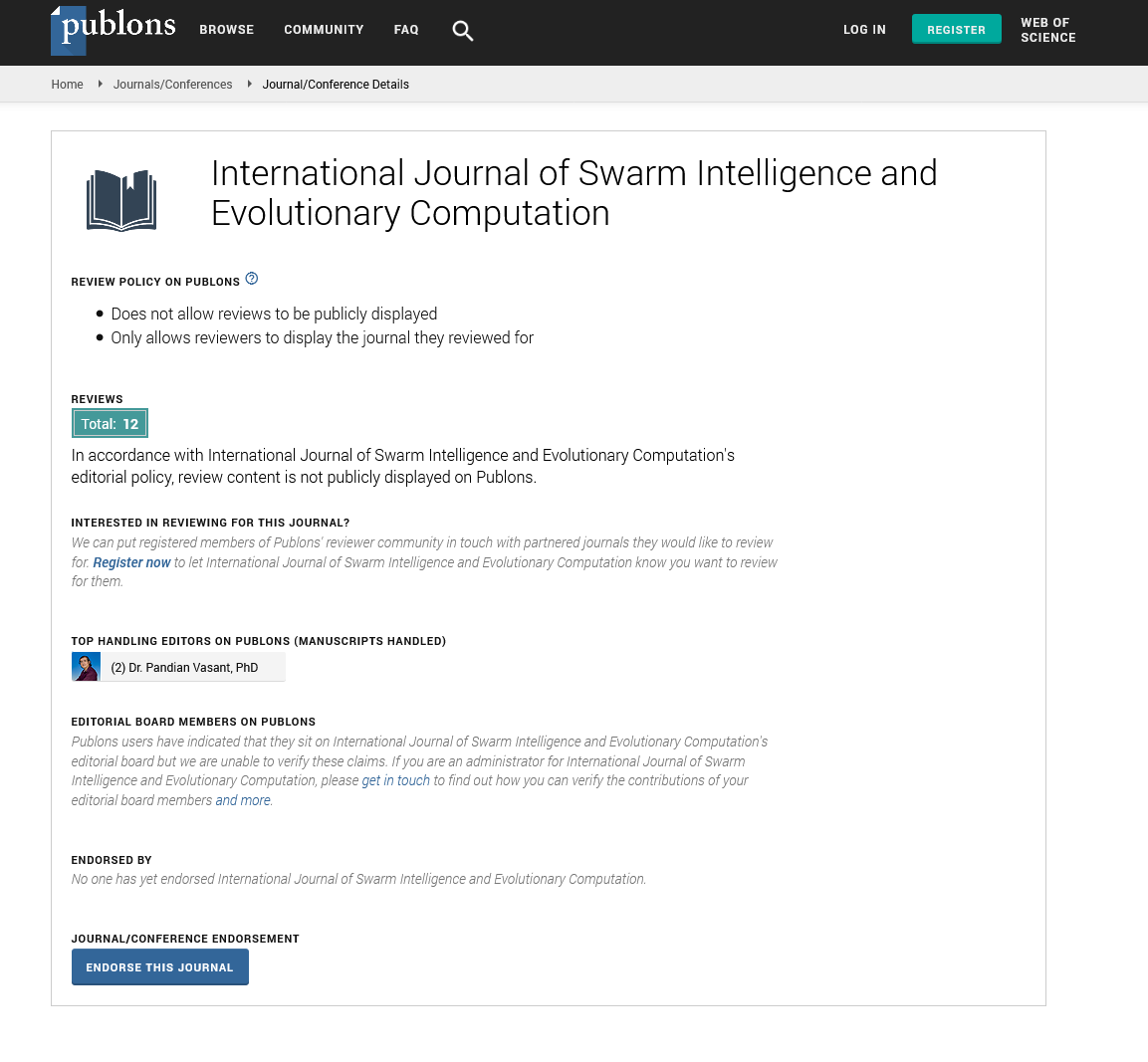Indexed In
- Genamics JournalSeek
- RefSeek
- Hamdard University
- EBSCO A-Z
- OCLC- WorldCat
- Publons
- Euro Pub
- Google Scholar
Useful Links
Share This Page
Journal Flyer

Open Access Journals
- Agri and Aquaculture
- Biochemistry
- Bioinformatics & Systems Biology
- Business & Management
- Chemistry
- Clinical Sciences
- Engineering
- Food & Nutrition
- General Science
- Genetics & Molecular Biology
- Immunology & Microbiology
- Medical Sciences
- Neuroscience & Psychology
- Nursing & Health Care
- Pharmaceutical Sciences
Opinion Article - (2024) Volume 13, Issue 2
Navigating Real-World Challenges: Implementing Machine Learning Algorithm
Tim Shepherd*Received: 01-Mar-2024, Manuscript No. SIEC-24-25339; Editor assigned: 04-Mar-2024, Pre QC No. SIEC-24-25339 (PQ); Reviewed: 18-Mar-2024, QC No. SIEC-24-25339; Revised: 26-Mar-2024, Manuscript No. SIEC-24-25339 (R); Published: 04-Apr-2024, DOI: 10.35248/2090-4908.24.13.364
Description
Machine Learning (ML) algorithms have witnessed remarkable advancements, fueled by vast amounts of data and computing power. While theoretical developments have been substantial, the translation of ML algorithms into real-world applications presents unique challenges. This section introduces the importance of ML in practical scenarios and sets the stage for a comprehensive exploration.
Application areas of ML algorithms
ML algorithms find extensive application across diverse domains, including:
Healthcare: Diagnosis prediction, personalized medicine, and patient outcome forecasting.
Finance: Fraud detection, credit risk assessment, algorithmic trading, and portfolio optimization.
Retail: Customer segmentation, demand forecasting, recommendation systems, and supply chain optimization.
Manufacturing: Predictive maintenance, quality control, and process optimization.
Transportation: Traffic prediction, route optimization, autonomous vehicles, and logistics management.
Natural Language Processing (NLP): Sentiment analysis, chatbots, language translation, and speech recognition.
Computer vision: Object detection, image classification, facial recognition, and autonomous surveillance.
Challenges in real-world ML applications
Deploying ML algorithms in real-world settings poses several challenges, including:
Data quality: Ensuring the availability of clean, labeled, and representative data for training and validation.
Model interpretability: Interpreting and explaining ML model predictions to stakeholders and regulatory bodies.
Scalability: Handling large-scale datasets and computational resources required for training complex models.
Bias and fairness: Addressing biases in data and models to ensure fairness and equity in decision-making processes.
Robustness and security: Protecting ML models from adversarial attacks, data poisoning, and model stealing.
Ethical considerations: Navigating ethical dilemmas related to data privacy, consent, and societal impact of ML applications.
Strategies for successful implementation
To overcome the challenges associated with real-world ML applications, organizations can adopt several strategies, including:
Data preprocessing: Performing data cleaning, feature engineering, and normalization to improve data quality and model performance.
Model selection: Choosing appropriate ML algorithms based on the problem domain, data characteristics, and performance requirements.
Model evaluation: Conducting rigorous testing and validation to assess model accuracy, robustness, and generalization capabilities.
Interpretability techniques: Employing interpretability techniques such as feature importance analysis, model-agnostic methods, and visualization tools to enhance model transparency.
Continuous monitoring: Monitoring model performance in production environments and implementing feedback loops for model retraining and adaptation.
Collaboration and governance: Establishing cross-functional teams and governance frameworks to ensure collaboration, accountability, and compliance with regulatory requirements.
Case studies: This section presents real-world case studies highlighting the application of ML algorithms in various industries, including healthcare, finance, retail, manufacturing, transportation, NLP, and computer vision. Each case study demonstrates the challenges faced, strategies employed, and outcomes achieved through the deployment of ML solutions.
Future directions and opportunities
As ML continues to evolve, several future directions and opportunities emerge, including:
Explainable AI: Advancing research in explainable AI to enhance model interpretability and transparency.
Federated learning: Exploring federated learning techniques to enable collaborative model training across distributed data sources while preserving data privacy.
AI ethics and governance: Developing frameworks for AI ethics, accountability, and governance to address societal concerns and ensure responsible AI deployment.
Domain-specific applications: Tailoring ML algorithms to specific industry domains and use cases to maximize impact and value generation.
Human-machine collaboration: Fostering collaboration between humans and AI systems to leverage the strengths of both for decision-making and problem-solving.
Conclusion
In conclusion, Machine Learning algorithms offer immense potential for addressing real-world challenges and driving innovation across various industries. By understanding the application areas, challenges, and strategies for successful implementation, organizations can harness the power of ML to unlock new opportunities and achieve transformative outcomes. As ML technologies continue to evolve, the journey towards practical and impactful ML applications promises to reshape industries, improve decision-making processes, and enhance human well-being.
Citation: Shepherd T (2024) Navigating Real-World Challenges: Implementing Machine Learning Algorithm. Int J Swarm Evol Comput. 13:364.
Copyright: © 2024 Shepherd T. This is an open-access article distributed under the terms of the Creative Commons Attribution License, which permits unrestricted use, distribution, and reproduction in any medium, provided the original author and source are credited.


